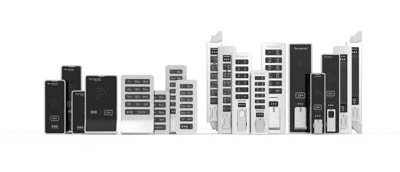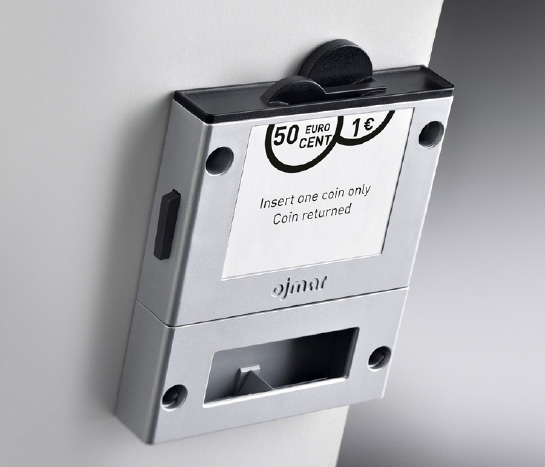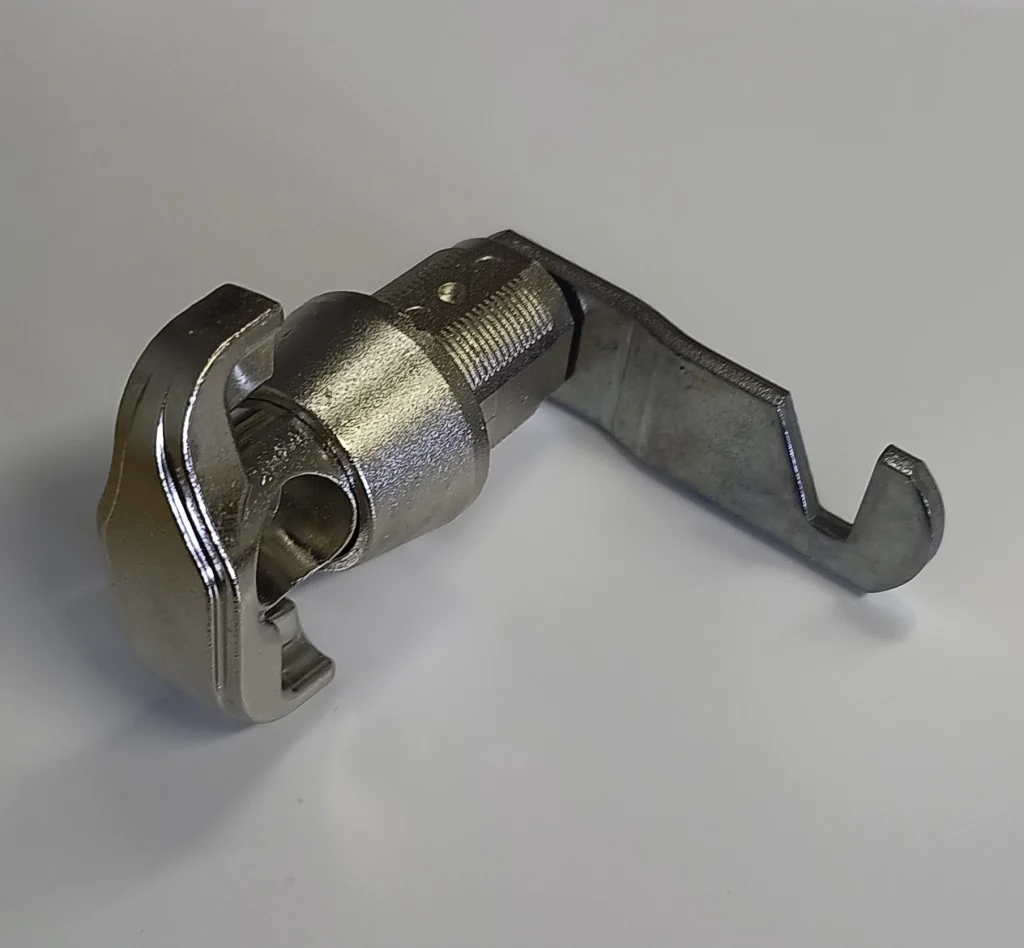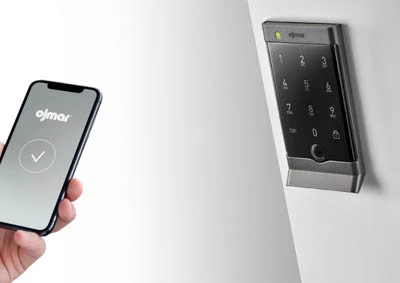The Complete Guide to Locker Locks
November 4, 2025

Selecting the appropriate locker lock system represents a critical decision for any facility manager, gym owner, or educational institution. Moreover, the right choice directly impacts security, user satisfaction, and operational efficiency. This comprehensive guide explores every type of locker lock available on the market today. Furthermore, we’ll examine the specific applications where each lock type excels.

Understanding Wet and Dry Specification Locks
Before exploring different lock types, it’s essential to grasp the core difference between wet and dry specifications. This ensures you select mechanisms suited to your facility’s environmental demands.
Wet Specification Locks
Wet specification models are engineered to resist moisture, humidity, and corrosive environments. Manufacturers often use stainless steel or heavily plated materials to ensure durability. These robust solutions are ideal for swimming pools, leisure centres, spas, and outdoor facilities, where constant exposure to damp conditions demands higher resilience. Marine-grade construction helps prevent rust and corrosion over time, which is why these options typically carry a higher cost than standard alternatives.
Furthermore, wet specification locks feature sealed mechanisms that prevent water ingress. The internal components receive special coating treatments. As a result, these locks maintain smooth operation despite regular exposure to steam and chlorinated water. Many aquatic facilities consider these locks essential for long-term reliability.
Dry Specification Locks
Designed for use in low-humidity indoor settings, dry specification locks are a practical choice for schools, offices, gyms, and warehouses. Though more affordable than wet-rated options, they still deliver dependable security where environmental stressors are minimal. Standard materials and finishes offer adequate performance for these applications.
Dry specification units deliver dependable performance in controlled indoor environments. Easy to install and requiring little upkeep, they offer a cost-effective solution for offices, schools, gyms, and similar spaces.
Key-Operated Locker Locks
Key-operated locks remain the most traditional and widely recognised locker security solution. Additionally, they offer straightforward functionality that users understand instinctively.

Standard Key Locks
Standard key-operated mechanisms provide each user with a dedicated key tied to a unique combination. This ensures exclusive access to their assigned unit, making them ideal for permanent installations in schools, workplaces, and staff facilities. The straightforward design delivers long-lasting performance with minimal maintenance.
Standard keyed mechanisms are available in a range of quality grades. Premium models incorporate anti-drill pins and hardened steel shackles for enhanced protection, while basic versions offer sufficient security in low-risk environments. Installation is straightforward, typically requiring just a single drill hole in the locker door.
Mastered Lock Systems
Mastered lock systems introduce hierarchy and management flexibility into key-operated security. Essentially, these systems allow multiple access levels within a single facility. A master key opens all locks in the system. Meanwhile, individual keys operate only their designated locks. Facility managers and cleaning staff benefit enormously from master key access.
Furthermore, mastered systems streamline emergency access procedures. Security personnel can quickly open any locker during investigations. Lost key situations resolve more efficiently. Additionally, organisations can audit locker contents without requiring individual keys. Facility management best practices frequently recommend mastered systems for larger installations.
Submaster Key Systems
Submaster systems add another layer of organisational control beyond simple mastering. These sophisticated systems create multiple management levels. A grand master key opens every lock in the entire facility. Submaster keys open specific groups or zones of lockers. Individual keys still operate only single locks.
For example, a large leisure complex might implement submasters for different departments. The swimming pool manager receives a submaster for pool changing rooms. The gym manager gets a submaster for fitness area lockers. The facilities director holds the grand master key. Consequently, this structure provides departmental autonomy whilst maintaining overall control. Therefore, submaster systems excel in large, complex facilities with multiple zones or departments.
Unmastered Lock Systems
Unmastered lock systems contain no master key override capability. Each key operates only its corresponding lock. No other key, including management keys, can open these locks. Privacy-focused facilities sometimes prefer unmastered systems. Personal training studios and premium health clubs occasionally choose this approach.
However, unmastered systems create management challenges. Emergency access requires lock drilling or cutting. Lost keys necessitate complete lock replacement. Therefore, most facilities opt for mastered systems despite the additional cost.
Coin-Operated Locker Locks
Coin-operated locks suit temporary locker usage in public facilities. Moreover, they generate revenue whilst providing security.

Classic Coin Locks
Classic coin-operated systems accept standard currency. Users insert a coin, turn the key, and secure the locker, with the coin held inside the mechanism. Upon return, the key releases both the lock and the deposited coin—making this a cost-free solution for temporary storage. These units are widely used in swimming pools, beaches, and theme parks due to their simplicity and convenience.
Additionally, classic coin locks require minimal facility management. No revenue collection is necessary. Users appreciate the free service. The mechanism proves robust and reliable over years of operation.
Euro Profile Coin Locks
Euro profile coin-operated mechanisms reflect a modernised design that aligns with European standardisation. They accept euro coins or other specified denominations and incorporate enhanced security features. Their streamlined form integrates well with contemporary locker aesthetics, making them a preferred choice for modern facilities seeking both function and visual appeal.
Moreover, euro profile locks typically feature improved weather resistance. The advanced sealing mechanisms protect internal components better. Consequently, these locks suit outdoor installations and wet environments.
Single Coin Payment Locks
Single coin payment mechanisms retain the deposited currency as a usage fee. Users insert the required denomination to access the locker, but the system does not refund the coin upon unlocking. As a result, these solutions offer a revenue stream for facility operators. They are commonly installed in train stations, airports, and commercial shopping centres where short-term, paid storage is in demand.
The payment model creates a self-funding locker system. Revenue helps offset facility maintenance costs. Additionally, the payment requirement deters casual misuse of locker spaces.
Two Coin System Locks
Two-coin systems require users to insert a pair of coins at once, effectively doubling the deposit value. This added commitment encourages users to safeguard their locker keys and reduces the likelihood of key loss or locker abandonment. As a result, these mechanisms are frequently chosen by sports venues and premium leisure centres seeking enhanced user responsibility.
Furthermore, two coin locks return both coins upon proper locker return. The system encourages responsible usage. Facilities experience fewer lost key incidents. Moreover, the dual coin requirement can accommodate different currency denominations.
Coin Box Collection Systems
Coin box collection systems integrate payment coin locks with secure collection containers. A removable coin box attaches behind the locker bank. Coins drop directly into the secured collection box. Facility managers periodically remove full coin boxes for counting. Consequently, this system streamlines revenue collection from multiple lockers.
Additionally, coin box systems reduce theft risks compared to individual lock collection. The boxes feature robust security locks themselves. Transparent collection tracking becomes possible. Therefore, coin box systems suit high-traffic commercial facilities.
Swivel Hasp Locks for Padlocks
Swivel hasp locks offer maximum flexibility by allowing users to supply their own padlocks. Moreover, this approach suits environments where users prefer personal security devices.

The swivel hasp mechanism features a rotating metal loop. Users pass their padlock shackle through the hasp. The hasp swivels to secure the locker door. This simple system accommodates any padlock size or type. School locker rooms frequently install swivel hasp fittings.
Furthermore, swivel hasp locks eliminate facility key management entirely. Users bear responsibility for their own padlock security. Lost padlock situations require simple bolt cutting rather than lock replacement. Additionally, users can select their preferred security level. Budget-conscious users choose basic padlocks. Security-focused individuals invest in high-security options.
However, swivel hasp systems create some management challenges. Abandoned padlocks require manual removal. The facility must maintain bolt-cutting tools. Nevertheless, the flexibility and low initial cost make swivel hasps popular for educational institutions.
Mechanical Combination Locks
Mechanical combination locks eliminate keys entirely through numeric code access. Additionally, these locks suit users who prefer memorising codes to carrying keys.
Mechanical dial mechanisms operate via a series of precision-engineered internal wheels. By rotating the dial in a specific sequence, users align pins that trigger the release. These access systems require no batteries or electrical components, making them exceptionally reliable. Master Lock has been at the forefront of innovation in this space, developing many of the industry’s most trusted designs.
Moreover, mechanical combinations can be changed periodically for security. Facility managers reset combinations between user tenancies. The purely mechanical operation withstands harsh environments. Dust, moisture, and temperature variations rarely affect performance. Consequently, mechanical combination locks excel in challenging conditions.
However, mechanical combinations prove slower to operate than key locks. Users must carefully dial the complete sequence. Rushed operation leads to errors. Additionally, combination security depends on users maintaining code confidentiality. Shared combinations compromise security.
Electronic Combination Locks
Electronic combination locks bring digital convenience to locker security. Furthermore, these advanced systems offer features impossible with mechanical alternatives.

Electronic keypads replace mechanical dials with push-button interfaces. Users simply enter their numeric code. The electronic system verifies the code and releases the lock. Entry proves much faster than mechanical dial operation. Additionally, electronic locks can accommodate longer, more complex codes.
Furthermore, electronic combination locks offer programmable features. Time-delayed opening prevents smash-and-grab theft. Audit trails record access times. Multiple user codes can coexist in a single lock. Consequently, electronic locks suit high-security and managed access environments.
Most electronic combination locks require battery power. Regular battery replacement becomes necessary. Low battery indicators alert users before complete failure. Some advanced models feature backup battery compartments. Therefore, facilities must implement battery maintenance schedules.
Moreover, electronic locks resist tampering better than mechanical alternatives. The digital system detects repeated incorrect code attempts. Temporary lockouts discourage brute-force attacks. Security protocols often recommend electronic locks for high-value storage.
RFID Locker Locks
RFID (Radio Frequency Identification) locks represent cutting-edge locker security technology. Moreover, these contactless systems offer unparalleled convenience and management capabilities.
RFID locks operate through proximity card or fob readers. Users simply present their credential near the reader. The system instantly verifies authorisation and unlocks the locker. No physical contact is required. Therefore, RFID locks eliminate wear from key insertion and dial turning.
Additionally, RFID credentials can integrate with existing access control systems. The same card that grants building entry can operate lockers. This integration enhances user convenience significantly. Corporate fitness centres and premium facilities increasingly adopt RFID solutions.
Furthermore, RFID systems enable sophisticated access management. Credentials activate instantly upon enrolment. Lost cards deactivate immediately through the central system. Temporary access grants accommodate visitors easily. Consequently, RFID locks suit dynamic environments with changing user populations.
The technology supports detailed audit logging. Facility managers track every access event. Usage patterns inform capacity planning. Security investigations benefit from comprehensive access records. Therefore, RFID locks excel where accountability matters.
However, RFID systems require significant initial investment. The electronic infrastructure costs more than traditional locks. Additionally, facilities must issue and manage RFID credentials. Nevertheless, the operational benefits often justify the expenditure for larger installations.
Battery-Free Electronic Locks
Battery-free electronic locks solve the maintenance challenge inherent in powered systems. Moreover, these innovative devices harness alternative energy sources.
Energy harvesting technology powers these advanced locks. Some models capture kinetic energy from handle turning. Others utilise electromagnetic induction from card presentation. The generated power suffices for lock operation. Therefore, battery replacement becomes unnecessary.
Additionally, emergency backup mechanisms ensure continued operation. Mechanical override systems provide failsafe access. The hybrid design combines electronic convenience with mechanical reliability. Consequently, battery-free locks suit facilities seeking low-maintenance solutions.
Furthermore, these sustainable locks reduce environmental impact. No battery disposal is required. Lower maintenance demands decrease operational costs. Modern sports facilities appreciate the ecological and economic benefits.
However, battery-free electronic locks currently cost more than battery-powered alternatives. The sophisticated energy harvesting components increase manufacturing costs. Nevertheless, total cost of ownership proves competitive when considering eliminated battery replacement.
Networked Lock Solutions
Networked lock systems represent the pinnacle of locker security management. Moreover, these connected solutions transform lockers from simple storage into intelligent facility assets.
Networked locks communicate continuously with central management software. Wireless or wired connections transmit real-time status information. Administrators monitor the entire locker facility from a single interface. Consequently, networked systems provide unprecedented visibility and control.
Furthermore, networked solutions enable dynamic locker assignment. Users receive available lockers automatically through mobile apps. The system optimises locker utilisation across the facility. Permanent assignments, temporary rentals, and flexible hoteling coexist seamlessly. Therefore, networked locks maximise facility capacity.
Additionally, networked systems integrate with payment processing. Users book and pay for lockers through smartphone apps. Automatic billing occurs for extended usage. Revenue tracking becomes precise and effortless. Commercial facilities appreciate the streamlined financial management.
The technology supports advanced notification systems. Users receive alerts about locker status changes. Cleaning staff get notifications when lockers become vacant. Maintenance teams learn about malfunctioning locks immediately. Consequently, operational efficiency improves dramatically.
Moreover, networked locks facilitate hot-desking and flexible workspace initiatives. Employees access available lockers throughout their workday. The system prevents double-booking automatically. Integration with workforce management software optimises space utilisation. Modern workplace strategies increasingly rely on networked locker systems.
However, networked solutions require substantial initial investment. The electronic locks cost more than standalone alternatives. Network infrastructure demands professional installation. Additionally, facilities need software licensing and IT support. Nevertheless, large facilities and multi-site organisations find networked systems invaluable.
Choosing the Right Lock for Your Facility
Selecting appropriate locker locks demands careful consideration of multiple factors. Moreover, the optimal choice varies significantly between facility types and user requirements.
Environmental Considerations
Environment dictates whether wet or dry specification locks are necessary. Swimming pools absolutely require wet specification locks. Indoor offices can utilise standard dry specification options. Outdoor facilities need weather-resistant designs. Therefore, assess your environmental conditions first.
Usage Patterns
Consider how frequently lockers change occupants. Permanent assignments suit key-operated mastered systems. High-turnover environments benefit from coin-operated or RFID solutions. Temporary public use favours simple coin return locks. Consequently, usage patterns strongly influence lock selection.
Security Requirements
Evaluate the value of items typically stored in lockers. High-value storage demands electronic or RFID locks with audit capabilities. Casual clothing storage adequately suits mechanical locks. Corporate environments often require networked solutions for compliance. Therefore, match security features to actual risk levels.
Management Capabilities
Consider your facility’s management resources. Simple mechanical locks need minimal oversight. Networked systems require IT support and software management. Coin-operated locks demand regular collection procedures. Additionally, assess staff technical capabilities honestly.
Budget Constraints
Initial purchase price represents only part of total ownership cost. Factor in installation expenses, ongoing maintenance, and replacement frequency. Battery-powered locks incur ongoing battery costs. Networked systems require software licensing fees. Therefore, calculate comprehensive lifecycle costs.
User Experience
Consider your users’ preferences and technical comfort levels. Elderly users might struggle with complex electronic systems. Young, tech-savvy populations embrace RFID and app-based solutions. International visitors prefer intuitive coin-return mechanisms. Consequently, user demographics should influence lock selection.
Installation and Maintenance Best Practices
Proper installation ensures optimal lock performance throughout their service life. Moreover, regular maintenance prevents premature failures and user frustration.
Professional installation proves worthwhile for electronic and networked systems. The technical complexity demands specialist knowledge. Mechanical locks suit capable maintenance staff installation. Always follow manufacturer specifications precisely. Additionally, verify locks function correctly before declaring lockers operational.
Establish routine maintenance schedules tailored to each access mechanism. Mechanical systems benefit from regular lubrication and alignment checks. Electronic variants require periodic battery replacements and software updates. For wet-area installations, monthly inspections for signs of corrosion are essential. By implementing proactive maintenance, you significantly extend the lifespan and reliability of your security infrastructure.
Furthermore, maintain adequate spare parts inventory. Common wear items should remain readily available. Quick repairs minimise user inconvenience. Preventive maintenance programmes reduce long-term costs substantially.
Future Trends in Locker Lock Technology
Locker lock technology continues evolving rapidly. Moreover, emerging innovations promise even greater convenience and security.
Biometric locks using fingerprint or facial recognition are gaining traction. These systems eliminate credentials entirely. Users simply present themselves for instant recognition. Additionally, biometric locks prevent credential sharing and loss.
Smartphone-based access is becoming increasingly common. Bluetooth and NFC technology enable phone-operated locks. Users appreciate the convenience of all-in-one device functionality. Furthermore, smartphone apps facilitate seamless payment integration.
Artificial intelligence promises predictive maintenance capabilities. Smart systems will identify failing locks before they malfunction. Automated work orders will generate automatically. Consequently, reactive maintenance will evolve toward proactive management.
Sustainability drives solar-powered and kinetic energy solutions. Environmental concerns encourage battery-free designs. Facilities increasingly prioritise ecological responsibility. Therefore, green lock technologies will expand rapidly.
Conclusion: Making Your Locker Lock Decision
Selecting appropriate locker locks requires balancing multiple competing priorities. Security, convenience, cost, and management capabilities all demand consideration. Moreover, no single lock type suits every situation perfectly.
Traditional key-based systems remain a practical choice for permanent allocations and budget-sensitive environments. Coin-operated mechanisms excel in high-traffic, temporary-use settings such as public facilities. For corporate and premium spaces, electronic and RFID-enabled access offers advanced control and convenience. At the highest tier, networked solutions provide scalable, centralised management ideal for large or complex installations.
Furthermore, wet specification requirements dramatically narrow options for aquatic facilities. Dry specification locks serve most other environments adequately. Environmental assessment must precede detailed lock selection.
Ultimately, successful lock selection aligns with facility objectives and user needs. Carefully evaluate your specific requirements against available options. Consider future growth and changing needs. Additionally, consult with experienced suppliers about optimal solutions for your circumstances.
The ideal locking system strengthens facility security while ensuring a seamless user experience. Choosing the right solution requires thoughtful research, as a well-matched system offers years of dependable, low-maintenance operation. Treat this decision as a strategic investment in your facility’s efficiency and safety—not just a routine purchase
Discover more from Blog Total Locker Service
Subscribe to get the latest posts sent to your email.